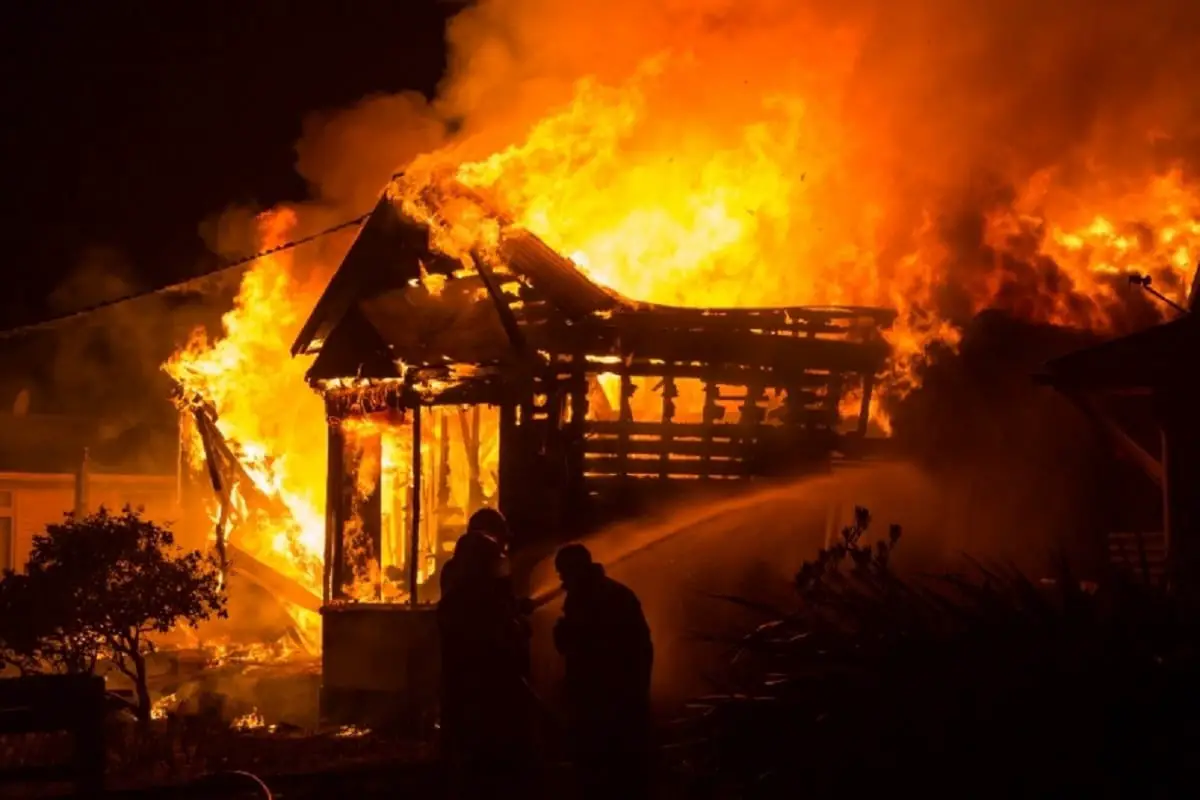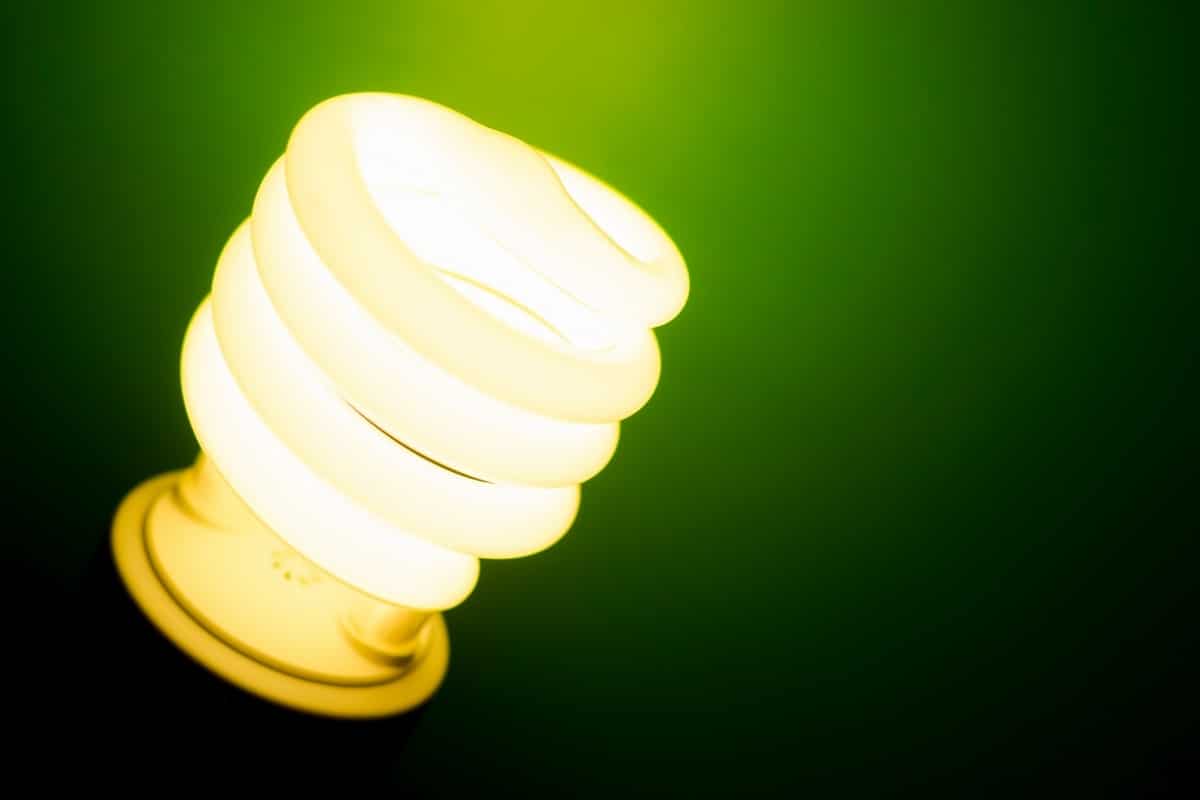LED lights have become a common form of lighting for homes and offices. This is because they use less energy than other types of bulbs. In fact, because of the benefits they provide, these types of lights are being installed more and more in offices and homes.
But have you wondered if or how LED lights can catch on fire? This is a very serious question, and we discuss the answer here.
LED Lights And Electrical Fire Risk
Electrical fires are a potential risk from using LED, incandescent, and compact fluorescent lights. But there are plenty of other sources of electrical fires in residential and commercial buildings. These include:
- Wiring
- Cable insulation
- Structural or framing issues
- Electrical malfuncions or failures
- Short ciruit arcs
- Defective or worn insulation
- Faulty outlets and appliances (computers, flat-screen TVs)
- Light fixtures (including LEDs)
- Extension cords
- Space heaters
Faulty appliances and outlets are a greater source of electrical fires than light fixtures overall.
LED Lights Use Semiconductors
LED lights emit light provided by a semiconductor (called a diode) instead of a bulb. This means they have a lower chance of causing fire than other types of light.

Incandescent and halogen lights, on the other hand, radiate so much heat that they are often used as heat sources for various purposes, including industrial farming.
Because LED lights emit less heat, they are great for small, confined spaces such as bedrooms, bathrooms, and workspaces where the temperature is important.
Cheap, Low-quality LED Lights Are Higher Fire Risks
Like other types of lights, cheaply made and lowcost LED’s pose a greater fire risk than higher quality LEDs. This is especially true from manufacturers that rely on outsourced components from lower-income countries outside their domestic market. Even lights made in countries known for their manufacturing quality can produce faulty LEDs. These lights may fail under certain stresses and impacts and emit too much heat.
LED Light Components
LEDs are made of many components, each of which could fail and make them a fire risk. These include:
- Secondary optics, or diffuser (the visual bulb part for appearance)
- The Light Emitting Diode (LED)
- Control Chip
- Transfer pad
- Housing / heat sink
- Socket / base
- Optics or remote phosphor (allows for color changing)
- LED chip encapsulants (protects sensitive chips from moisture and stress)
- Reflector materials (to spread light)
- Conformal coating (moisture control)
- Thermal interface (LED heat insulation)
- Transformer (wall plugin)
Any or all of these can fail and cause the LED to become less effective and perhaps more of a fire risk. However, identifying low-quality LEDs or their components can be difficult. It may be best to do research and find the most reputable brands and read online reviews to find the safest LEDs.
What Keeps LEDs Cool?
Today’s LEDs have heatsinks that disperse heat away from the light and into the surrounding environment. This keeps the electronics inside from getting too hot and potentially starting a fire. The damage caused by heat is what makes other types of lights (halogen, incandescent, etc.) fizzle out. This is also one reason LEDs have a longer lifespan than other types of light.
You can expect LEDs to have cooler temperatures overall than incandescent or halogen while emitting similar levels of light. Overall, it is the quality of the heatsink component that determines how much heat is released away from the LED.
LED’s structure is designed to keep much of the heat internally and only disperse through the heatsink. More of their energy is used to produce light overall in comparison to traditional lights, which pose more of a fire risk than LEDs.
How Hot Do LEDs Get?
Its normal for lights of all types, including LEDs to get warm while they are turned on. But how hot can LEDs get? This depends on the design of the light and their components as well as the local ambient temperature. The normal LED temperature level running in an ambient local temperature of 75 °F will be 100°F – 200°F.
Regardless of the type of light you use, outside and inside ambient temperature will affect how much heat the lights produce. LED will not be able to resist getting hotter as the environment gets hotter.
A switched-on LED light will feel hot to the touch if it crosses 104°F and any temperature beyond 122°F will burn the skin. Most importantly, watch out for touching the heat sink of an LED as this does get hot to the touch.
However, most LEDs are able to maintain a warm to the touch temperature, given the environment they are in. This actually is what helps keep them safer in terms of health and safety hazards than other types of light.

Highly Rated LED Light Bulbs
GE Soft White 60 Watt Replacement LED Light Bulbs, General Purpose, Dimmable Light Bulbs 12 Pack
Can LED Lights Catch on Fire?
Most of the compounds used to make the electrical components in LEDs are not flammable and will not ignite when in the midst of a fire.
LEDs contain semiconductors and diodes along with plastic casing and wires. These are made of many potentially flammable materials. By far the most flammable parts of LED lights are the plastic bulbs and casings. Today’s LEDs can include flame retardant chemical additives to the plastic which can prevent fires from ingiting the light from the outside.
Materials and compounds used to make LEDs and related components (sockets, splitters, adapters, tracks) include:
- PBT fireproofing (plastic finishes)
- Plastic
- Aluminum
- Copper
- PVC sheath
- Steel
- Gold
- Silver
- Zinc
- Nitrogen
- Gallium
- Arsenic
- Phosphor
- Adhesives for seals (Adhesives and sealants to keep the LEDs together and safe from environmental issues)
What About PBT Fire Resistant Plastic?
PBT fire resistant chemicals are applied to plastics used in LEDs to make them less prone to igniting a fire. Many LED bulbs are advertised to resist heat up to ~400°F (~200°C).
However, the standard house fire can reach temperatures up to and beyond ~1500°F (~800°C). So yes, a full-blown house fire can burn right through LED lights installed in your house and even contribute to the flames.
Can LED Lights Melt?
LED lights will not melt under normal operating conditions. However, a house fired could melt the outer plastic bulb and casing. However, by the time this happens, you should be well outside the home and into a safe location!
Can LED Lights Be Left On 24/7?
The key component that can affect how long an LED light can stay on safely is the wall transformer. It is important to make sure this does not overheat as it could pose a fire risk. So, for this reason, it is a good idea to not leave your LED lights on all day and night. Give the light and transformer a chance to cool down. LEDs that also have transformers include:
- Christmas tree lights
- Desk lamps
- LED TVs
- Laptops, smartphones, and tablets
A simple way to prevent LED light or transformer overheating is to turn the lights off when you leave the room.
Are LED Lights Dangerous?
So, are LED lights dangerous? No type of lighting that uses plastics or other flammable materials is entirely safe from fire. Besides this, a person could drop them, crack them or bump into them which could cause injury.
Today’s LED lights can be tested by qualified electrical laboratories prior to being released on the market. Make sure to only buy LEDs from reputable brands that also provide this sort of rigorous testing. As with any type of electronic or lighting system, always read and follow the installation and operating instructions.
More LEDs!
LED lights come in many shapes and sizes and provide more opportunities for placement in the home or office than other types of lighting. LED lights can offer better lighting, better control of the lighting (through dimming), and a multitude of light colors. These along with improved energy efficiency and lifespan is what makes LEDs a popular choice today.
However, LED lights pose some risk of fire, so consider adding or updating your fire extinguishers in your home or office.
